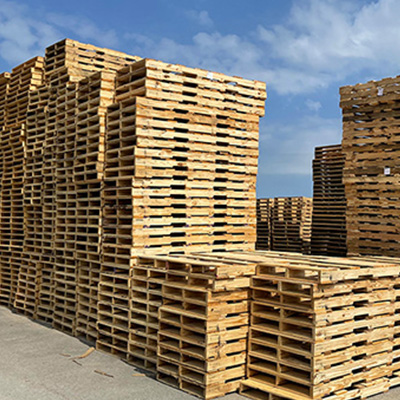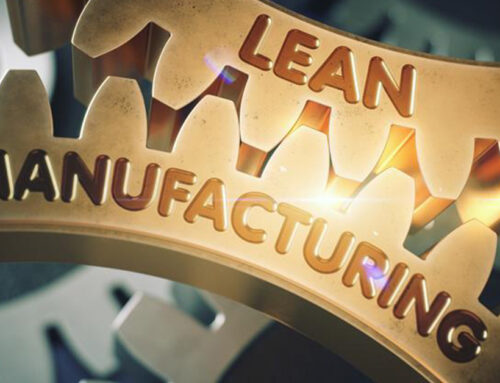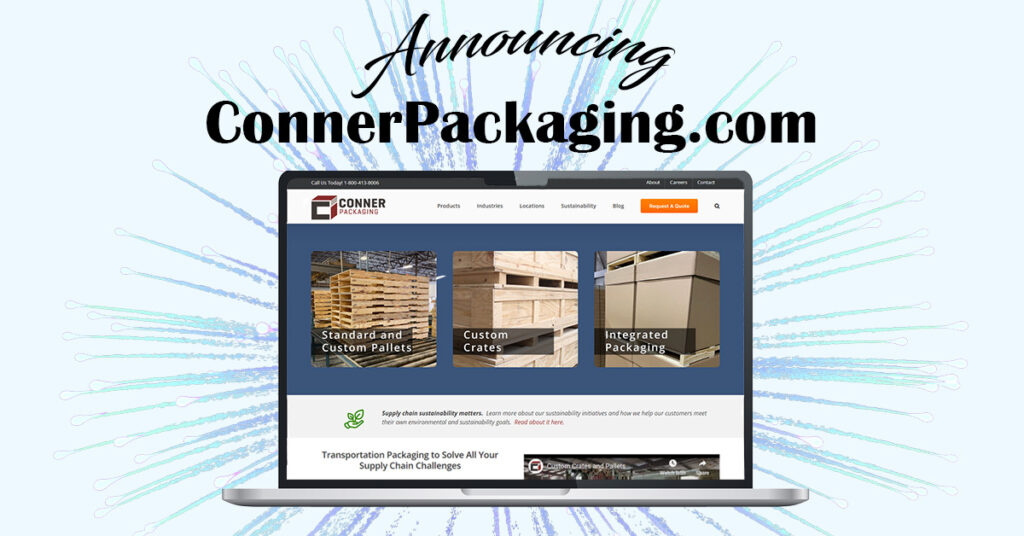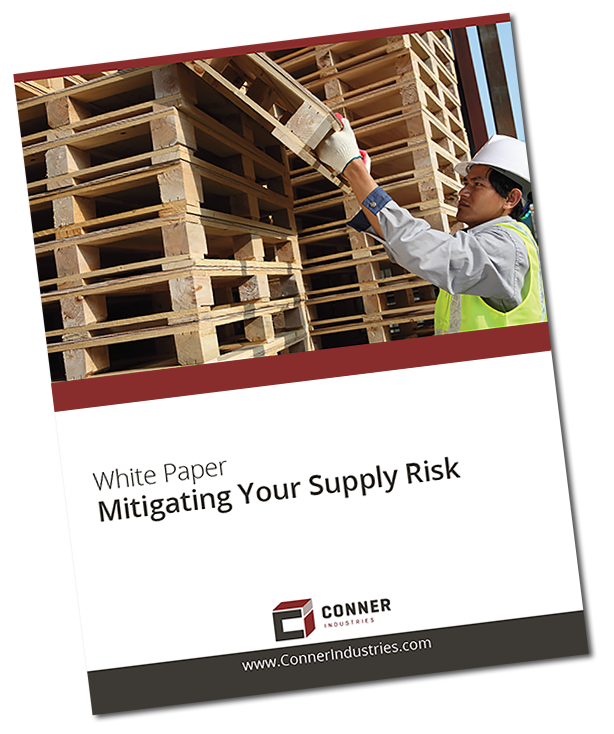
Spring Showers Bring… Pallet Mold?
Pallet mold can be a big concern for manufacturers in a wide variety of industries. Those in the food & beverage and pharmaceutical industries, can especially have strict standards to abide by. Whether you are in a sensitive industry or just have a higher standard for your pallets, it can be beneficial to know more about this subject. While mold minimally impacts the pallet’s lifespan, it can damage products, contaminate production lines, and pose health risks.
In this article, we will discuss what mold is, conditions for mold growth, pallet mold prevention, and how to remediate an already existing issue. Spring is in full swing and so is the rain. Don’t let nature slow down your production line, keep your pallets working optimally.
Identifying Mold on Wood Pallets
Mold, a type of fungus, thrives on the surface of wood products by producing pigmented spores. These spores, which can appear in black, white, green, orange, purple spots, or may also be invisible to the naked eye. Mold spores spread easily to other damp surfaces, including other wood products, and can spread rapidly under the perfect storm.
The wood type used for pallets influences mold risk; wood species high in stored sugars are particularly susceptible. However, no untreated wood is entirely free from mold risk without the proper precautions.
Conditions Favorable for Pallet Mold
Mold needs four key elements to grow on wood surfaces:

Moisture
Mold thrives in moist environments. Pallets stored in areas with over 60% humidity or with wood moisture content exceeding 19% are particularly at risk. Avoid using green or wet wood for pallet construction.

Oxygen
Mold requires oxygen, making it challenging to control in storage areas. Vacuum-sealing products stored on pallets can help reduce mold contamination risk.

Temperature
Mold can grow in a range of temperatures but prefers between 70 and 85 degrees Fahrenheit.

Food Source
Wood and the products stored on pallets (such as food, beverages, pharmaceuticals, apparel, and household items) provide ample food sources for mold.
Preventing Pallet Mold
The most effective strategy to prevent mold growth on pallets and wood packaging is to control moisture. Here are key practices:
Kiln Drying
Use kiln-dried lumber to reduce moisture content. This will make sure that your lumber starts with less moisture content and that you can continue to store it in an ideal place.
Proper Storage
Ensure lumber is stored indoors, in cool, dry, and well-ventilated conditions. Leaving packaging in the elements can lead to pallet mold growth. This is why it is highly discouraged to store pallets outside if you are in an industry with stringent mold restrictions.
Protect During Transport
Keep pallets undercover and well-ventilated during transport. It is important to train employees on the proper way to handle wood packaging, so that you can extend your pallet’s lifespan at any stage of your supply chain.
Kiln Drying vs. Heat Treating
Kiln drying removes moisture from the wood, which helps prevent mold growth. Heat treatment, on the other hand, sterilizes the wood by killing organisms but does not reduce moisture content. While both methods have their benefits, kiln drying is more effective at preventing mold because it lowers the wood’s moisture content.
Chemical Treatments
Various chemicals are available to limit mold and fungi colonization on wood packaging. These treatments can be effective for three to six months but may not be suitable for all industries due to regulatory restrictions, such as those imposed by the FDA.
Remediating Pallet Mold
Despite your best efforts, mold can still develop. In industries with strict mold regulations, discarding the affected pallet might be the only choice. For less strict industries, remediation is possible:
Pressure Washing – This removes visible mold but is not a permanent solution. Use a diluted bleach solution if permitted by customers to completely clean off the mold. Luckily, mold usually grows on the top layer and is easy to pressure wash off. The bleach solution will help to kill the fungus causing the pallet mold.
Dry Thoroughly – Ensure all wood components reach a moisture content below 19% to kill mold. Similar to kiln drying, this will make sure that moisture is lower within the wood and help to prevent pallet mold reoccurrence. Keep pallets dry to prevent the pallet mold from returning, as the storage practices suggest above.
Conclusion – Moisture Control is Crucial
To prevent pallet mold within your manufacturing facility, focus on moisture control:
- Avoid recycled pallets, which may harbor mold that you cannot see with the naked eye.
- Choose a reliable industrial packaging supplier who understands the need for mold-free wood, or the requirements that you are working within.
- Store pallets with adequate airflow and in cool temperatures. Ventilation and temperature are a big part of the development of pallet mold.
- Keep pallets dry and dry them out immediately if they get wet. Practice safe pallet storage within all steps of your supply chain.
By implementing these strategies, you can significantly reduce the risk of pallet mold, ensuring the safety and integrity of your products and production processes.
How Conner Packaging Can Help
Conner Packaging is a leading provider of pallets, crates, foam, and integrated packaging. With more than 40 years of experience, we can help you find packaging solutions to fit your unique needs. If mold is an issue within your industry, our team can help to make sure that every truckload is up to the standards that you need.
We look into your supply chain and any challenges you may be facing with our total cost approach, to make your life easier and to keep your production line running. Learn how Conner Packaging can help you today!

![[PRESS RELEASE] Conner Industries Expands Integrated Packaging Division with Acquisition of Kirkland Sales Inc.](https://connerpackaging.b-cdn.net/wp-content/uploads/2024/05/Foam-Page-Featured-500x383.jpg)









